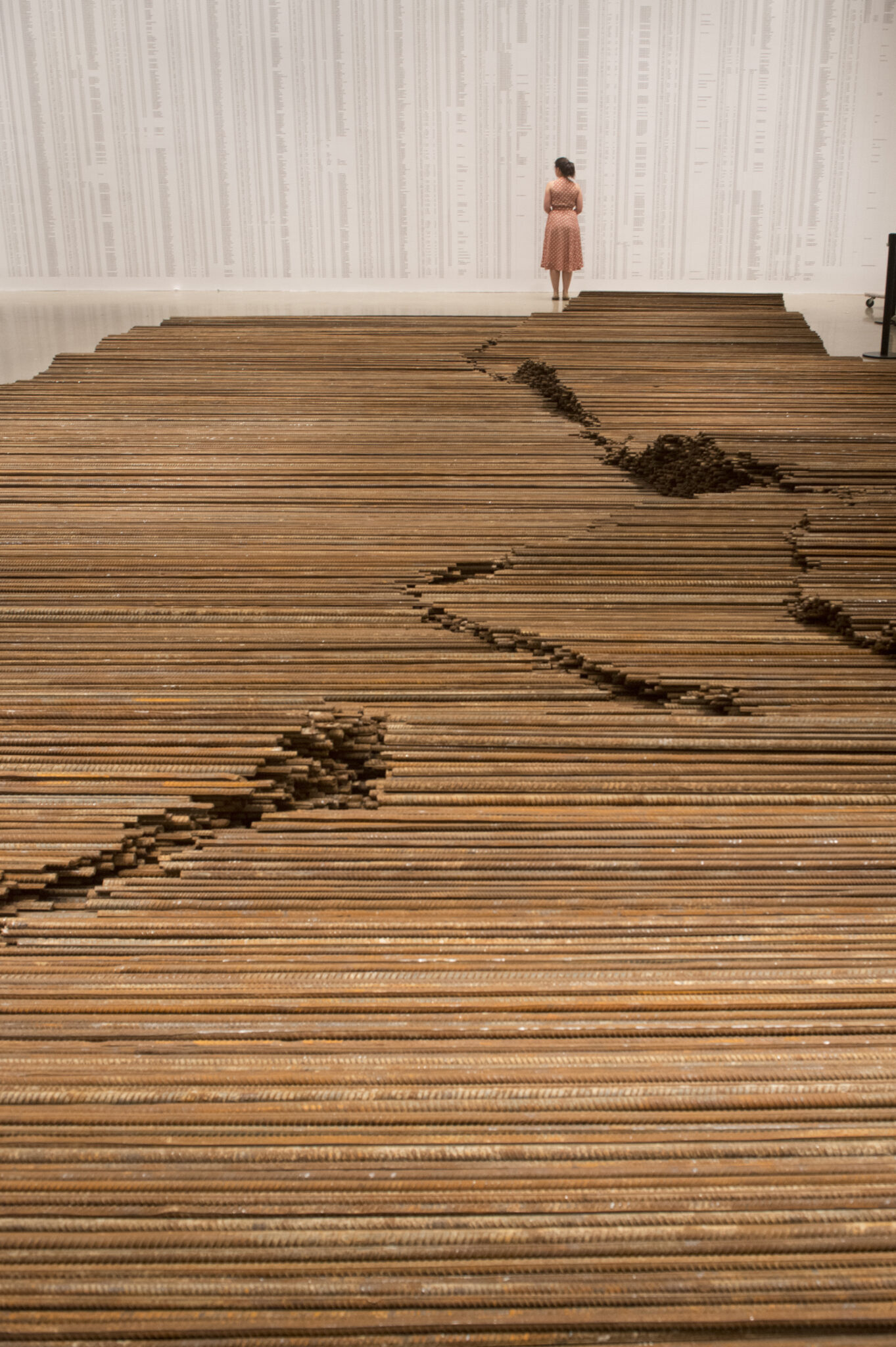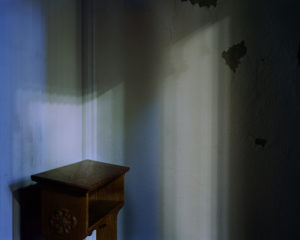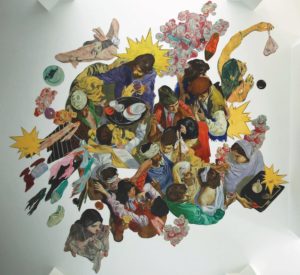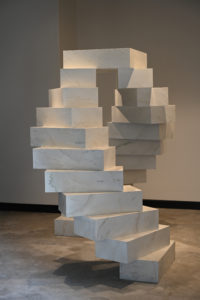Susanne Langer (1895–1985) was born in New York City. She studied and later taught philosophy at Radcliffe College and completed her doctorate under A.N. Whitehead. Her books Philosophy in a New Key, Feeling and Form, and Problems of Art were read widely beyond the confines of professional philosophy and appreciated by many artists, musicians, and critics, who found her descriptions of artistic creation and meaning illuminating and resonant with their own practices. Her work has recently enjoyed a resurgence of interest, including the 2020 book The Philosophy of Susanne Langer: Embodied Meaning in Logic, Art, and Feeling by Adrienne Dengerink Chaplin. (Bloomsbury).
Dutch-born Adrienne Dengerink Chaplin studied philosophy at the Vrije Universiteit Amsterdam and taught philosophical aesthetics at the Institute of Christian Studies in Toronto. She is a visiting research fellow at King’s College London and a research associate at the Margaret Beaufort Institute in Cambridge, England. She is founding curator of the traveling exhibition Art, Conflict and Remembering: The Murals of the Bogside Artists, which aims to increase British understanding of the causes and legacy of the Troubles in Northern Ireland through documentation of a series of street murals in Derry/Londonderry. It has been shown throughout the UK, including at Coventry Cathedral. She was interviewed by sculptor and critic Theodore L. Prescott.
Theodore L. Prescott: Tell me how you got interested in Langer.
Adrienne Dengerink Chaplin: When I studied philosophy in Amsterdam, my main interest throughout was aesthetics and the philosophy of art, so I had read most major figures in the history of philosophy—from Plato and Plotinus to Hegel and Heidegger—with a view to what they had to say about beauty, art, taste, and perception. However, it was not until I came to Toronto to study for a year with Calvin Seerveld that I was introduced to Susanne Langer, who, I felt, was finally addressing many of the questions I was really interested in. To give you just one example: alongside philosophy I studied violin, and I was fascinated by the process through which physical sounds produced by the stroking of horsehair over catgut could evoke such a rich world of feeling and meaning. How does that transition take place? Langer’s philosophy of symbolic forms gave me a handle to start addressing that question.
Most philosophers and, for that matter, theologians start their reflections with the work of art as encountered in museums or concert halls. That is, they start with the finished product. Langer, however, is interested in the artistic process itself, that is, in what happens when an artist makes a mark or sound that is seen or heard as a vehicle for meaning and an invitation to interpretation, rather than just a random stain or noise. She once said: “Philosophy of art should start in the studio and not in the museum or the concert hall or library.”
Something else that attracted me in Langer was her ability to place art in relation to other forms of human meaning-making such as science or religion. Rather than pitting these over against each other, she saw them as different ways in which humans make sense of the world, with each lending itself to different kinds of articulation or what she, following Ernst Cassirer, would call “symbolic forms.”
TP: Someone in graduate school recommended Langer to me when I was trying to figure out the relationship between pictures and words. She helped me see that the verbal “idea” is not the engine powering visual art. My impression is that she was of her period, which was largely postwar American, and that the artists she was relating to were from that period. It seems she is enjoying a renaissance now, with the recent foundation of a Langer society, for example. What accounts for the lapse in attention to her work, and now the resurgence?
ADC: That’s not such an easy question to answer. Langer’s status and reception have always been difficult to describe for a variety of reasons. First of all, in her own time she was a marginal figure in professional philosophy largely because of a widespread prejudice against women. The philosopher William Hocking, after reviewing her manuscript Philosophy in a New Key for Harvard Press, wrote, “I’m prejudiced against books on philosophy by women; according to this prejudice no woman could write as good a book as she has written.” And that was meant as a compliment! While she held various visiting professorships at schools like NYU, Columbia, and Northwestern, she never had a tenured position until she was appointed at Connecticut College in 1954.
At the same time, the Penguin paperback edition of Philosophy in a New Key sold over half a million copies and appeared on many reading lists at art colleges, conservatories, dance academies, and film schools. So her public reputation extended much wider than the academic world. That’s largely because she addressed the kind of questions—about artistic creation, form, meaning, and intuition, about art’s place in society—that practicing artists related to. After decades of deconstructionist discourse and convoluted art theory, perhaps this is what artists are drawn to—reflecting on the actual practices and processes of art and the ways it can contribute to society at large.
Another reason she did not become part of mainstream philosophy was her wide-ranging and broad interdisciplinary thinking at a time when professional philosophy, especially analytic philosophy, was becoming increasingly technical and specialized, dealing in a piecemeal fashion with very detailed, often narrowly linguistic problems. So her work went against the grain of her time.
One reason I think that there’s a much greater interest in Langer’s work right now is the way her associative and interdisciplinary way of thinking enables people to make connections between diverse phenomena and realms of discourse such as art, ritual, science, and religion. She often anticipated what would become major developments or turns in philosophy before they became recognized, such as the emphasis on the fundamentally metaphorical nature of language or the crucial role of the body in concept formation and cognition. She was also a strong critic of the traditional subject-object dichotomies of modern thought and its dominant logocentrism. Many of her critiques anticipated those developed by later thinkers such as Maurice Merleau-Ponty, Thomas Kuhn, Paul Ricœur, John Searle, Jacques Derrida, Michael Polanyi, and Gilles Deleuze, to name just a few.
TP: I was intrigued to learn that Langer knew and was admired by several prominent artists, musicians, and writers of her time. The painter Robert Motherwell quoted her extensively in his early lectures; composer Paul Hindemith said she was one of the few philosophers who made sense of music; and novelist and essayist Walker Percy was influenced by her too. Additionally, art critics like Clement Greenberg, Herbert Read, and Arthur Danto drew on her ideas. Why were people in the arts drawn to her? Was it because she wrote so much about art, or because she displaced aesthetics as the philosophical category for art?
ADC: I suspect that many artists were attracted to her philosophy because she was able to put into words and illuminate what they were doing when they were making art. She always listened very carefully to what artists had to say about that, and even though artists often used words vaguely and loosely, she was adept at grasping their meaning and translating it in more precise philosophical terms. Interestingly, her friend Wesley Wehr once said that although she had endless patience with artists when they expressed themselves imprecisely, when it came to philosophers, “she had no patience with imprecise language or what she called their ‘quasi-mystical mumbo jumbo.’”
She taught at Columbia from 1942 to ’54, during the rise of the New York school, at the center of abstract expressionism and action painting. In one interview, the painter and art critic Fairfield Porter said he liked Langer because she understood what art is about, such as the fact that, unlike in most types of self-expression, expression in art is never formless. He even said that Langer wrote like an artist. Paul Cummings, an art historian who interviewed many artists of his time, said that even younger painters, who would be involved in all kinds of crazy things, found her interesting. What is striking, however, is that while there are many side comments in interviews and lectures that make it clear that many artists were drawn to her writings, it is often hard to find any formal public acknowledgment of that. I think this reflects a similar male bias in the art world to what she met in the academic world.
TP: Langer wrote the book Feeling and Form: A Theory of Art in 1953. What does she mean by feeling? Is it emotions? And what do feelings have to do with forms? I’ve noticed in your chapters on the philosophers she studied—like Cassirer, Whitehead, and Wittgenstein—the word form occurs as something they all have in common. Is her understanding of philosophical forms related to what an artist or a musician would mean by an artistic form?
ADC: This is an important question, as many misinterpretations of her theories are based on a misunderstanding of her uses of this term. For a start, feeling indicates something much broader than standard emotions such as happiness, sadness, anger, and fear. For Langer, feeling goes further down in the human body, to the level of basic sensations, such as registering temperature, texture, size, light, sound, and smell. Such feelings are usually sensed as coming from the outside. But her use of the term also encompasses so-called higher, internal perceptions, such as a sense of safety or danger, fairness or unfairness, belonging or alienation, or being loved or unloved. Such feelings are often experienced as coming from deep within. Controversially, Langer also applies the term feeling to higher levels of consciousness that involve analytical and rational thinking. This is reflected in the title of her trilogy: Mind: An Essay on Human Feeling.
Regarding your question about form: Langer does not think primarily about standard artistic forms such as the sonata or sonnet but about any form that can serve as a vehicle for meaning. Forms are always certain kinds of abstractions from reality. On that view, as Langer puts it, “all genuine art is abstract,” including representational art, in that it abstracts a particular form or gestalt from the fluid and transient world of sense impressions.
TP: The subtitle of your book is Embodied Meaning in Logic, Art, and Feeling. Embodiment is a word with strong Christian resonances. From what I know, Langer respected religion, but was not herself affiliated with any faith tradition. How did Langer use the word? Do you see any consonance between her understanding and Christian ideas?
ADC: Langer was not a Christian—though her sister was married to an evangelical preacher—or known to be religious in any other sense. She can be called a humanist for whom the distinction between humans and animals lay in humans’ ability—and need—to express their experiences and views of the world by means of sensuous symbolic forms. Humans interpret and give shape to their environment not merely out of instinct but as responsive and responsible creatures. And for Langer the most important symbolic forms are those that articulate people’s ultimate values or worldview. Such symbols provide people with direction and orientation, and these can include religious rituals that express an awareness of or longing for what she calls a “beyond filled with holiness.” So, even though Langer herself does not profess any particular faith, she makes space for religious experience and its symbolic expression as an integral part of being embodied human beings.
TP: Do you think that Langer’s understanding of the arts is in some way related to, or compatible with, the work of Christian thinkers who have sought to describe the nature of the arts and their roles in human cultures?
ADC: This is a crucial question and one I often think about. A number of Catholic thinkers have seen Langer’s thought as a means to understand and affirm the Christian sacraments and other liturgical practices, but for me that is not necessarily her main contribution to Christian thought. In relation to particular religious symbolism, Langer is clear that the way she uses the word symbol in relation to art it is not a direct symbolism. She considers the work of art as a whole as a symbolic form, so we are really talking about two related but distinctly different things. Personally I see more resonances with Reformed philosophy in her understanding of the multidimensionality of the world, including an aesthetic dimension.
As it happens, Calvin Seerveld, who has inspired much of my own thinking about art, was himself clearly influenced by Langer’s work when he coined his definition of art as “the symbolical objectification of certain aspects of a thing, subject to the law of allusivity.” This definition in turn reflects the philosophy of the Dutch Christian philosopher Herman Dooyeweerd, who looked at the world in terms of a plurality of qualitatively different dimensions, each irreducible to the others and each highlighting a different aspect of God’s rich creation. This is very similar to the way Langer talks about different symbolic forms. Interestingly, both Dooyeweerd and Langer were influenced by the neo-Kantian Cassirer, so that may explain some of the overlaps.
The current pandemic, for instance, can be analyzed from a wide range of angles—chemical, biological, medical, social, political, psychological, economic, ethical, theological. None of these should be reduced to or privileged over any other, but together they shed light on what is clearly a very complex phenomenon. To put it differently, there is not one single explanation or account that can describe reality “as it really is.” This also puts science in its place. The world is not only known in terms of its empirically observable and quantifiable physical aspects but in many other significant dimensions that include the aesthetic and religious.
Likewise, while art can obviously serve many different functions in society, such as entertaining, commemorating, advertising, and so on, it can never be fully subsumed under or dictated by any of those functions if it is to retain its full integrity as an imaginative, open-ended form of expression. Another Christian philosopher, Lambert Zuidervaart, talks about art in terms of “imaginative disclosure,” and that rings very true to me. So, I think that Langer’s work is not only compatible with a Christian philosophy of art but also offers fresh resources to articulate such a philosophy better.
TP: When I asked you to choose a contemporary work to discuss in light of Langer’s ideas, you chose Ai Weiwei’s Straight, made between 2008 and 2012. Why does he exemplify her ideas?
ADC: First of all, he is an amazing artist—arguably the most interesting artist now living. He combines a highly innovative and versatile aesthetic sensibility with strong craftmanship and deep social engagement. What more can you want?
Ai is best known for his large-scale installations such as Sunflower Seeds, which was shown in the cavernous Turbine Hall of the Tate Gallery in 2010. His work Straight is from the same period—and has a strong political dimension. It was made in direct response to the 2008 earthquake in Sichuan in China. During the quake, while most multistory buildings stayed upright, hundreds of schools inexplicably collapsed, crushing thousands of children. It eventually became clear that many schools had been built of substandard material and in violation of codes by corrupt developers in collusion with politicians. Many were even built on geological fault lines.
While the authorities tried to cover up all evidence, Ai initiated a large-scale online citizen’s investigation to find out how many children had died and how. He spoke to many parents, collected names and other details, and documented much of the investigation on film. A year after the earthquake, he found out that local people were putting the mangled rebar up for sale as scrap metal. He decided to buy the whole lot to avoid having evidence melted down. At the time, he wasn’t even sure what he was going to do with it all. But once he had it in his studio, he assembled a team of blacksmiths and instructed them to straighten out each mangled bar, one by one, until they were returned to their pre-earthquake state. For him this process was as important as the outcome. It was almost a religious ritual.
Finally, he arranged all the straightened bars in piles of varying length and height within the overall shape of a large rectangle. The result was an exquisite minimalist floor sculpture with a gently undulating surface. It’s both peaceful and ominous, with its allusions to the seismic swelling and surging of the earth below. On the walls, he inscribed the names of all the children who had died, along with their ages and schools. There were over fifty-three hundred names. At some exhibitions the names have been read out loud. It’s very moving.
Art historically, Straight is a rich mélange of different streams in modern and contemporary art, from minimalism and formalism to abstract and conceptual art, to public commemorative, participatory, and socially engaged art.
Straight is minimalist but not in the sense that it is just about pure form. The work brims with multilayered metaphorical meaning. Even its monumental size evokes a sublime experience of something that cannot be grasped as a whole by the senses and that overwhelms you.
The work also has an element of Duchampian conceptualism and found art, in that it transforms ordinary objects into an artwork as a symbolic form. After all, the rods were found. But again, Ai does not employ this device merely to raise in-house questions about the nature or definition of art. He draws attention to the very nature of the materials, where they come from and what they signify. This conceptual aspect of the process is very much part of the meaning of the work itself. You need to know something about that background to fully appreciate Straight’s social significance.
Ai always had a strong interest in materials and processes of production and celebrates traditional skills and crafts. His own thorough understanding of a material’s potential enables him to push its boundaries, as is clear from the sculptures he made out of antique Chinese furniture. Langer once said that meaning accrues to form rather than the other way around, and I think that is very much the case in Ai’s work. It is the different configurations of the rods that lend the work its meaning. The political and social element—his exposure of the corruption and its cover-up—is embodied in the work’s material presence. A Langerian analysis of Ai’s work reveals Straight as an imaginative rendering—and brave exposure—of a human tragedy with serious political undertones and implications. Indeed, in April 2011 Ai was arrested and incarcerated for eighty-one days as a direct consequence of the citizen’s investigation he led.

Ai Weiwei. Straight, 2013. Reclaimed and straightened steel rebar. Dimensions variable. Pictured at the Art Gallery of Ontario. Photo: Keith Beaty/Toronto Star via Getty Images.

Still from Ai Weiwei’s short film Straight, 2018. 15:03 minutes. Viewable on YouTube. First minute includes violent images.
TP: Years ago Image disseminated bookmarks that quoted Dostoevsky’s “Beauty will save the world.” Surely beauty is central to many people’s idea of the arts, even as there is little agreement about what is beautiful. I find little discussion of beauty in your book, or in what I’ve read of Langer. How did Langer deal with ideas of beauty?
ADC: You are right. Langer talks very little, if at all, about beauty or traditional related questions of aesthetic judgement and taste. Perhaps this is connected to her emphasis on the making of art rather than the final product. Few artists set out on a work wanting to make something “beautiful,” though they might hope that that is the end result. By focusing on questions such as sense perception, affective experience, and human understanding, she returns aesthetics to its pre-Kantian origins.
To some extent, Langer’s avoidance of the word beauty reflects her own time. In twentieth-century art criticism the word was generally shunned. Art was not supposed to be beautiful or pleasing but shocking and challenging, original and truthful. Even so, I think that some of the connotations of beauty can be found in Langer’s notion of expressive form, or what Clive Bell calls “significant form.” Both the enjoyment and evaluation of art are based on the extent to which a work is successful in capturing and expressing certain aspects of human experience, and how it gives a form to those experiences.
Now this brings us back to Langer’s notion of feeling, which we discussed earlier. As we already saw, feeling is not just emotion but a wider range of conscious and subconscious vague sensations, moods, subtle hunches, elusive and transient thoughts, often collectively referred to as “lived experience.” That’s our general state of mind before we start to think about something in an analytic or systematic way. As mentioned earlier, a key element in Langer’s theory of art is the recognition that art gives a form to feeling. Art is not shapeless self-expression or uncontrolled venting of emotions such crying in pain, jumping for joy, or shouting in anger—but the conscious creation of a suitable form that can capture those elusive feelings in all their nuanced complexity and subtlety. She once wrote: “Sheer self-expression requires no artistic forms.” The more expressive the form, the more alive the work feels, the more dynamic and interesting or significant. Art that endures creates forms that evoke the semblance of a dynamic, living organism. I think it was this notion of organic form and the aliveness of art that resonated with certain artists associated with the abstract expressionist movement in the 1950s and 1960s, and with critics such as Clement Greenberg and Herbert Read.
We already mentioned Langerian resonances in Motherwell’s writing such as, “The function of the artist is to express reality as felt” and “art is the response of the ‘body-and-mind’ as a whole to the events of reality.” In other words, for these abstract expressionists, form was never an end in itself but a way to express something specific about the way the world was felt. So, to come back to your question about beauty—although Langer and her contemporaries generally did not use the term, their emphasis on form captured what many might consider a core element of beauty. You could almost say that artistic excellence which successfully captures living feeling is beauty’s equivalent.
Theodore L. Prescott is a sculptor who relishes seeing good art, reading and thinking about that, and asking questions. Some of his sculpture and writing can be seen at www.tedprescottsculpture.com.








